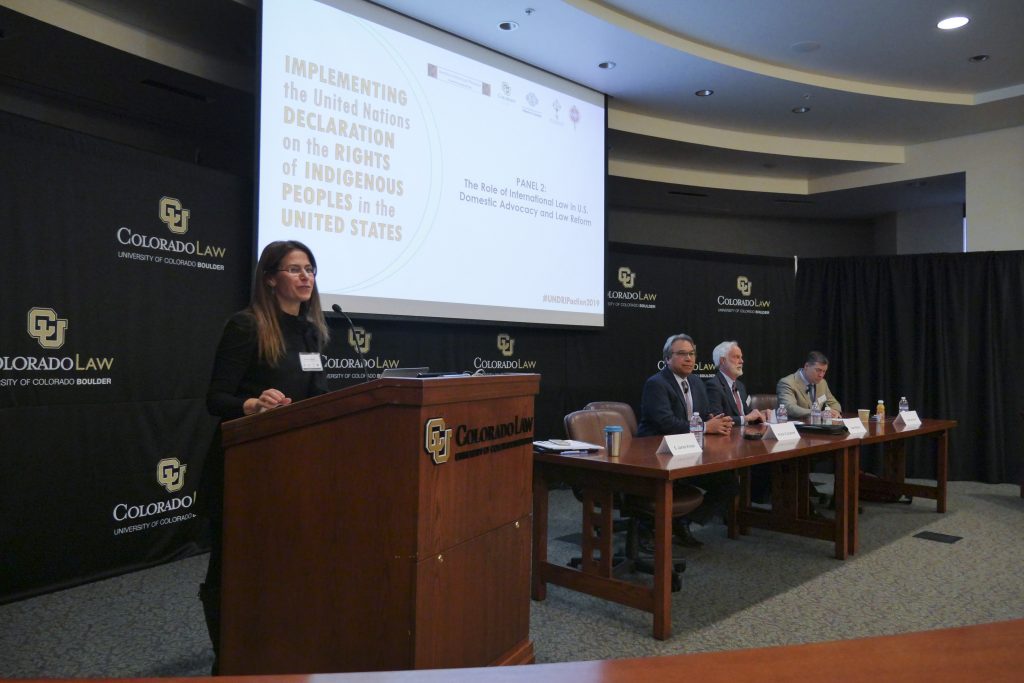The Project recognizes the need to assess the role of the Declaration in advocacy for indigenous peoples in the U.S. and is committed to studying the opportunities, theories, and methodologies of implementation; and to develop an advocacy strategy that takes into account various risks and opportunities, as well as the current moment in indigenous peoples’ human rights advocacy.
The Jurisgenerative Moment in Indigenous Peoples’ Human Rights
The U.N. General Assembly’s 2007 adoption of the Declaration marks a “jurisgenerative moment in indigenous peoples’ human rights,” in which “indigenous peoples are influencing law around and outside of their communities, all the way up into state and international practice.” By their very participation in institutions that have sought to exclude them, indigenous peoples have begun to influence and change the state-centric model of international law. And, by recovering their own legal traditions and working to decolonize institutions, indigenous peoples “increasingly expect international human rights law to reflect and advance indigenous norms—and for indigenous law, in turn, to reflect the best of international human rights principles.”

Working to implement human rights law is a deeply challenging project, even outside of the indigenous context. Advocacy using international law and institutions requires the development of expertise, significant resources, and a commitment to change our goals in favor of the long-term versus immediate results. As scholars and advocates have explained, implementing human rights involves ongoing participation, dialogue, diplomacy, and negotiation. Moreover, the legal aspects of human rights advocacy, which so deeply inform our Project here, must be complemented by efforts in other realms of society. The interconnection of indigenous, national, and international law work, must also acknowledging the importance of culture, community, education, funding, and other factors in the indigenous rights’ movement.
First and foremost, the Declaration is an instrument representing the collective human rights aspirations of indigenous peoples from across the globe and the formal embrace of those aspirations by a vast majority of U.N. member states, which voted for or subsequently expressed support for it. More technically, the Declaration is a “resolution” of the U.N. General Assembly and, as such, is a formal expression of the will of that body, comprised of the U.N. Member States.
Additionally, the Declaration has contributed to the development of—and at least partially reflects—general principles of international law or customary international law. A study conducted by a multinational committee of international law experts and approved by the International Law Association concluded that the Declaration “includes several key provisions which correspond to existing State obligations under customary international law.”
At a minimum, the Declaration can help states interpret and understand their existing human rights obligations as a matter of international and domestic law in the indigenous peoples’ context. The Declaration sets forth the normative baseline obligations for states and is increasingly relied upon in international and domestic legal systems, including in the U.S.
READ about approaches to using the Declaration in indigenous communities worldwide→
